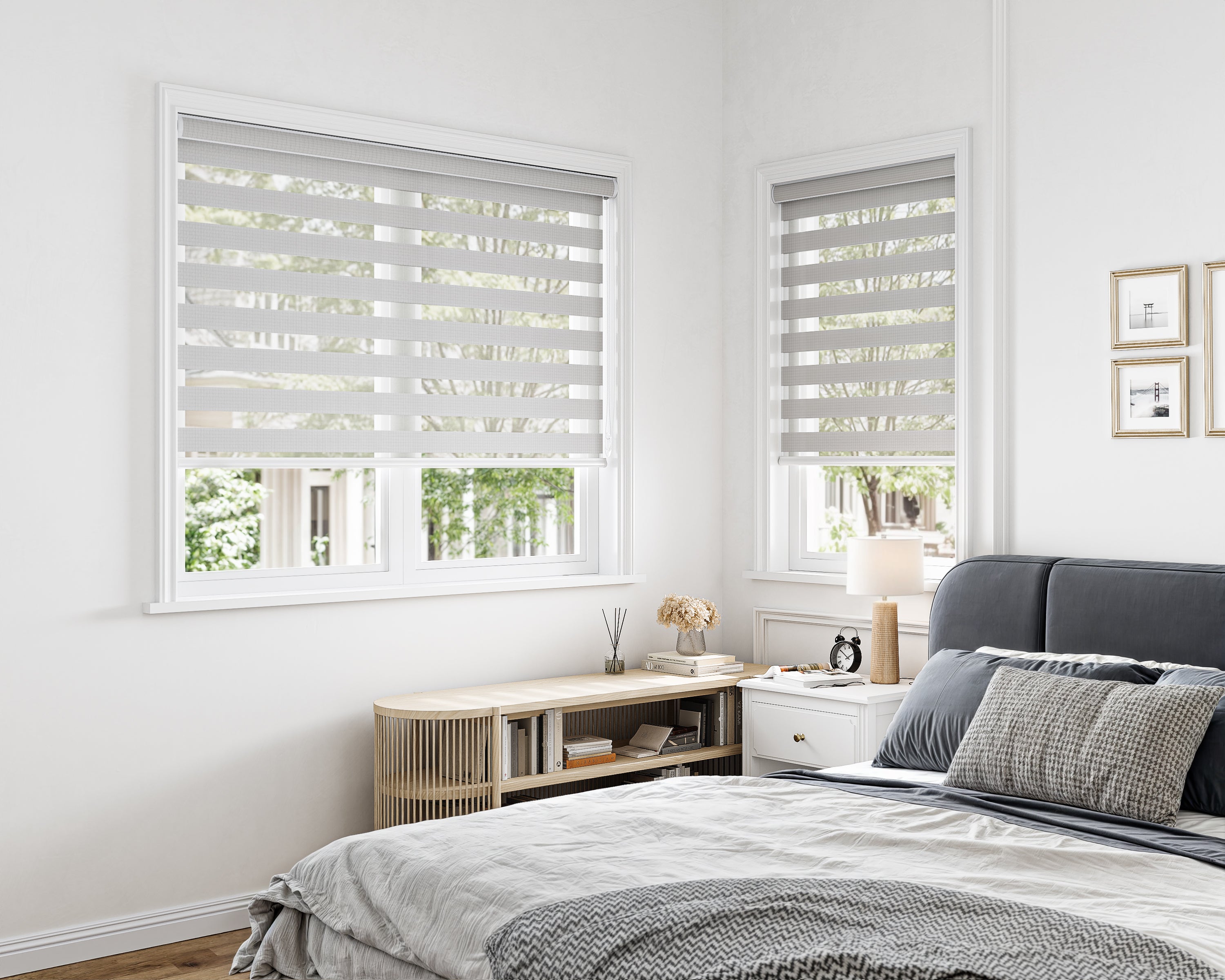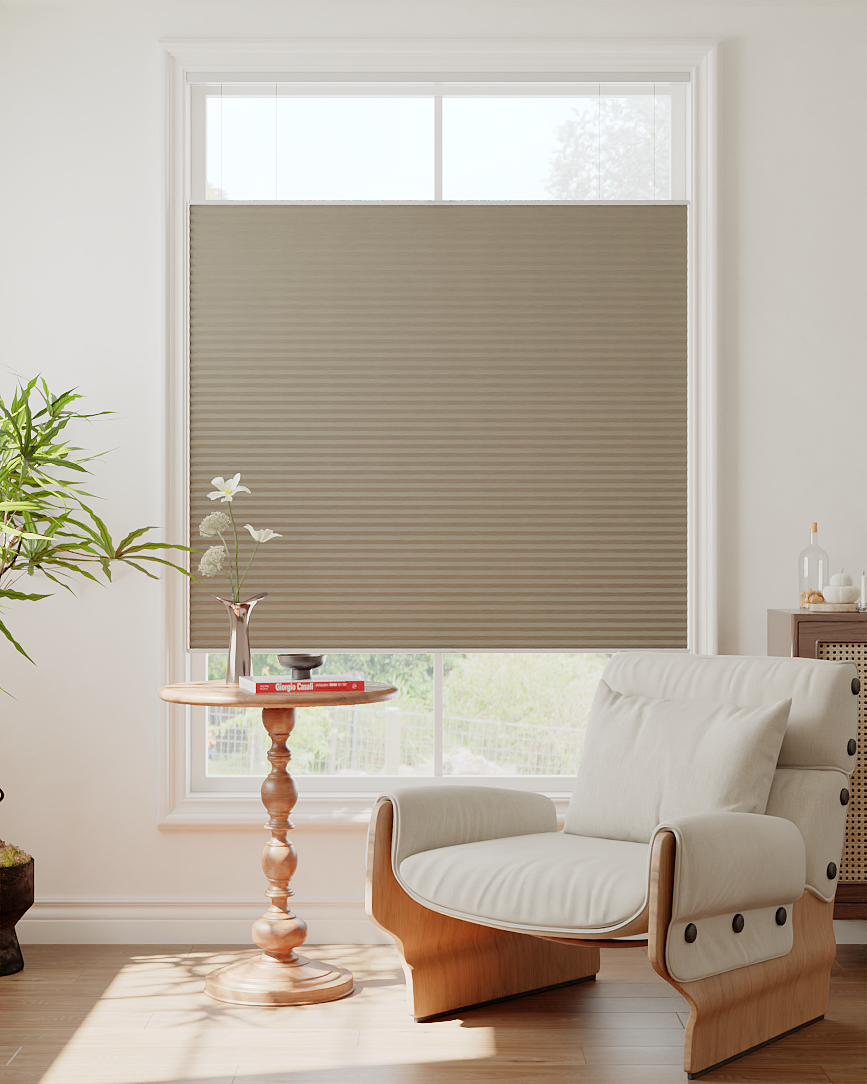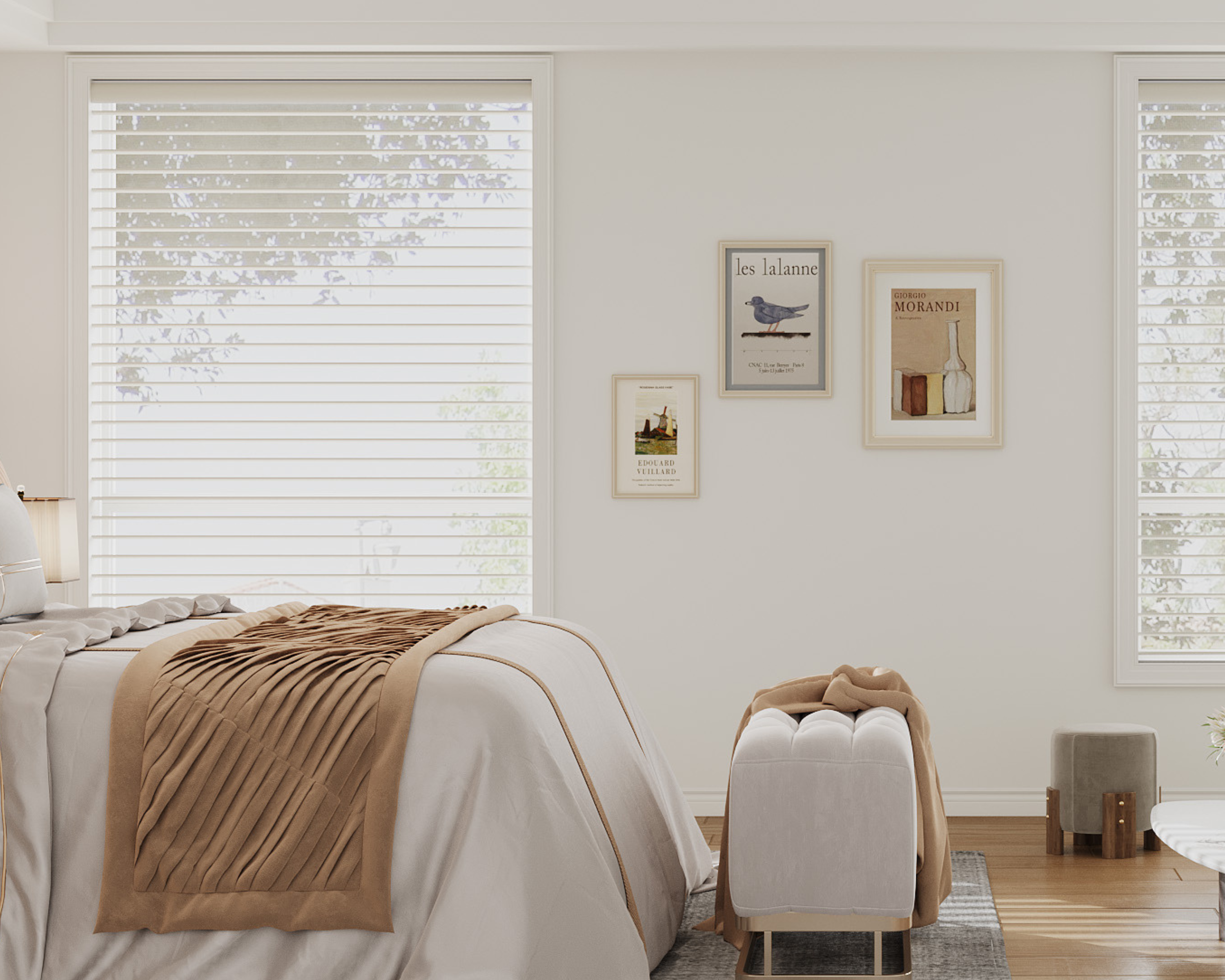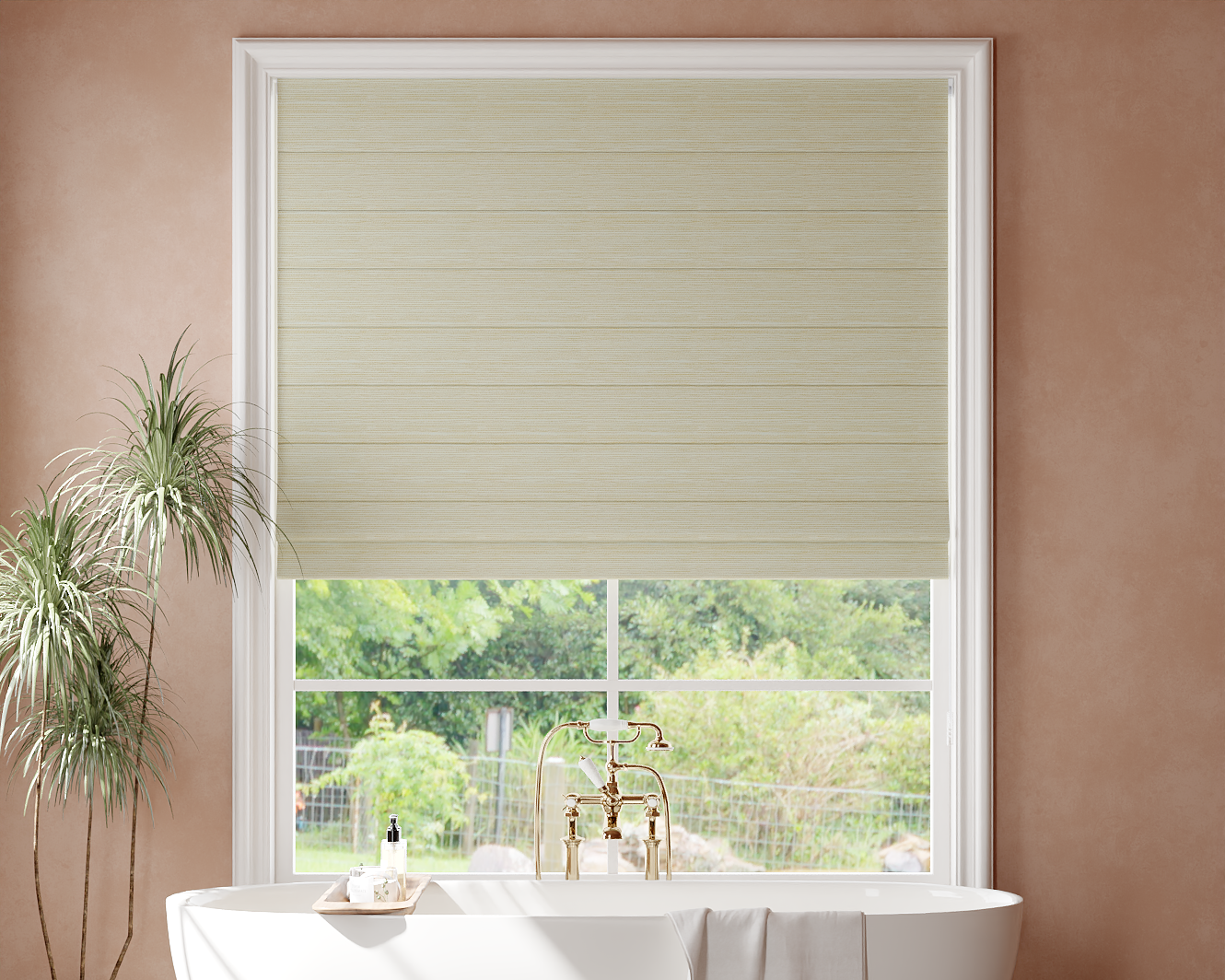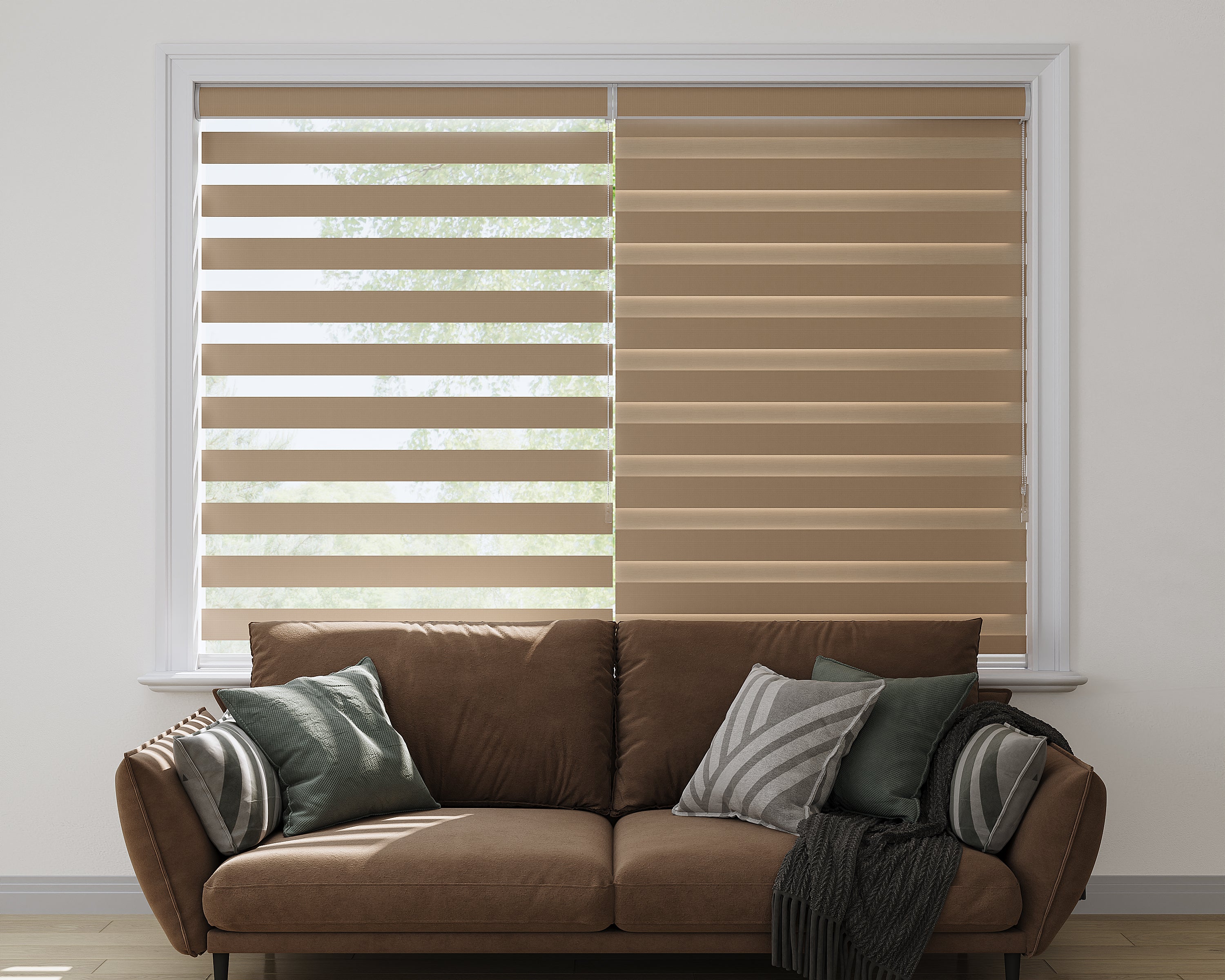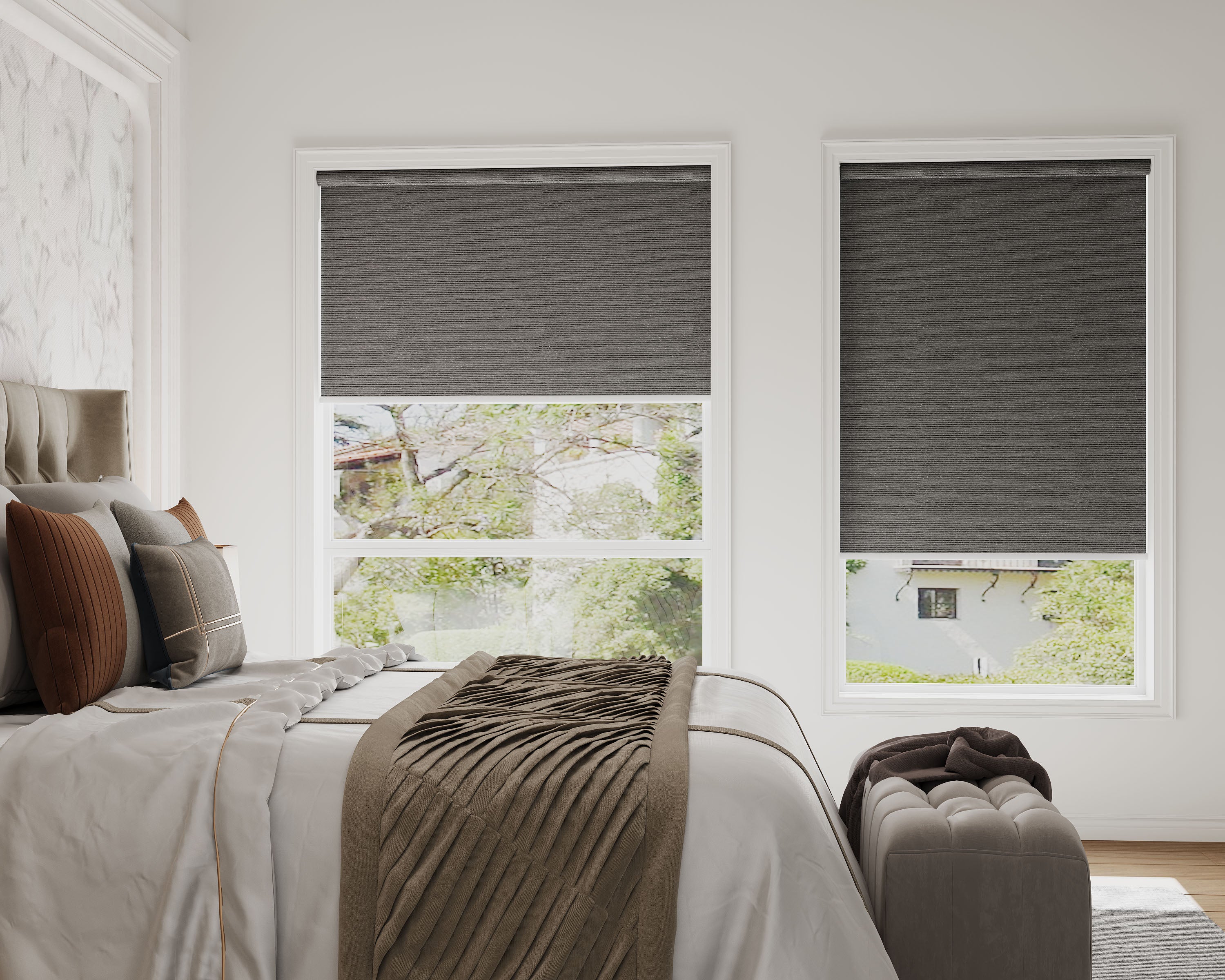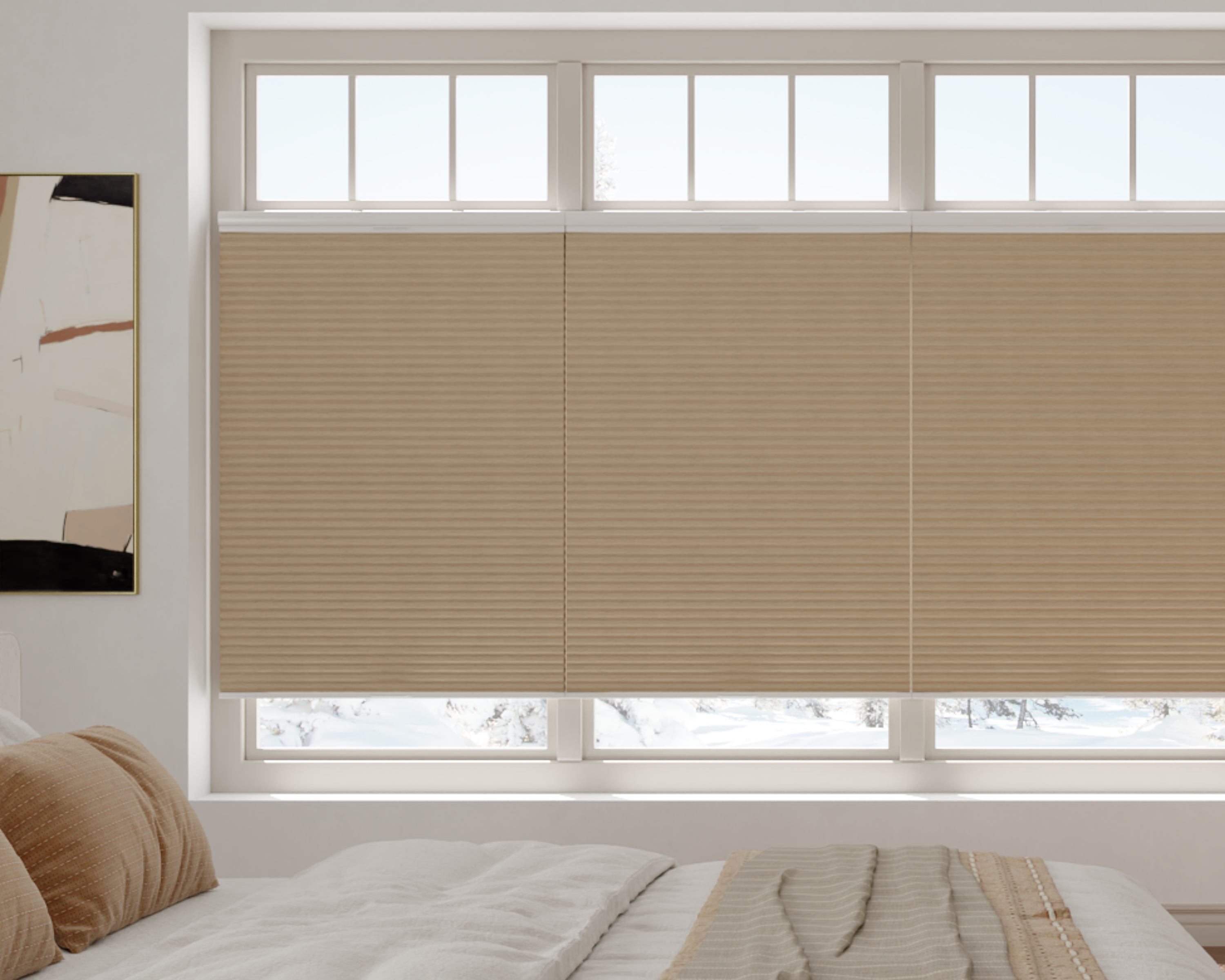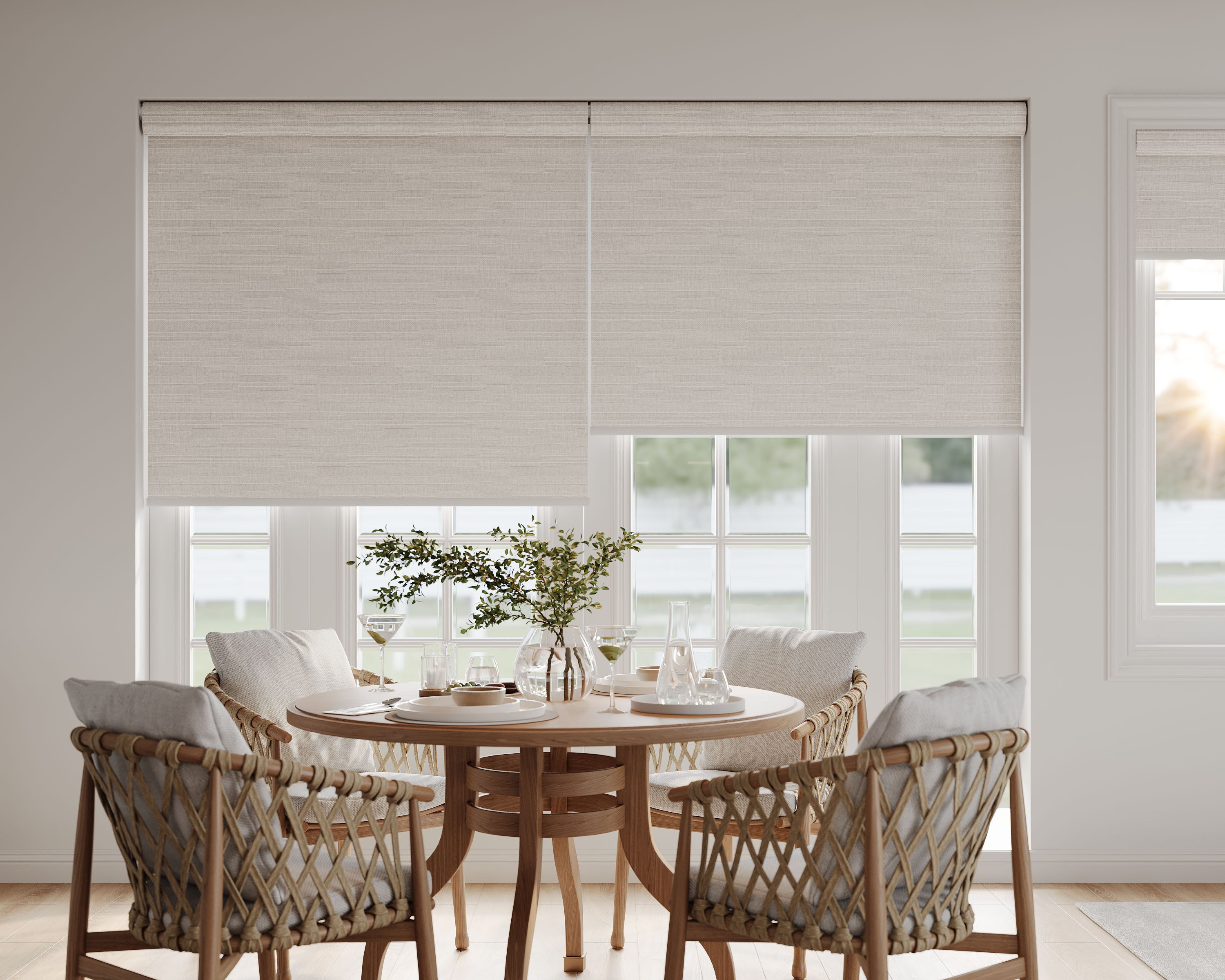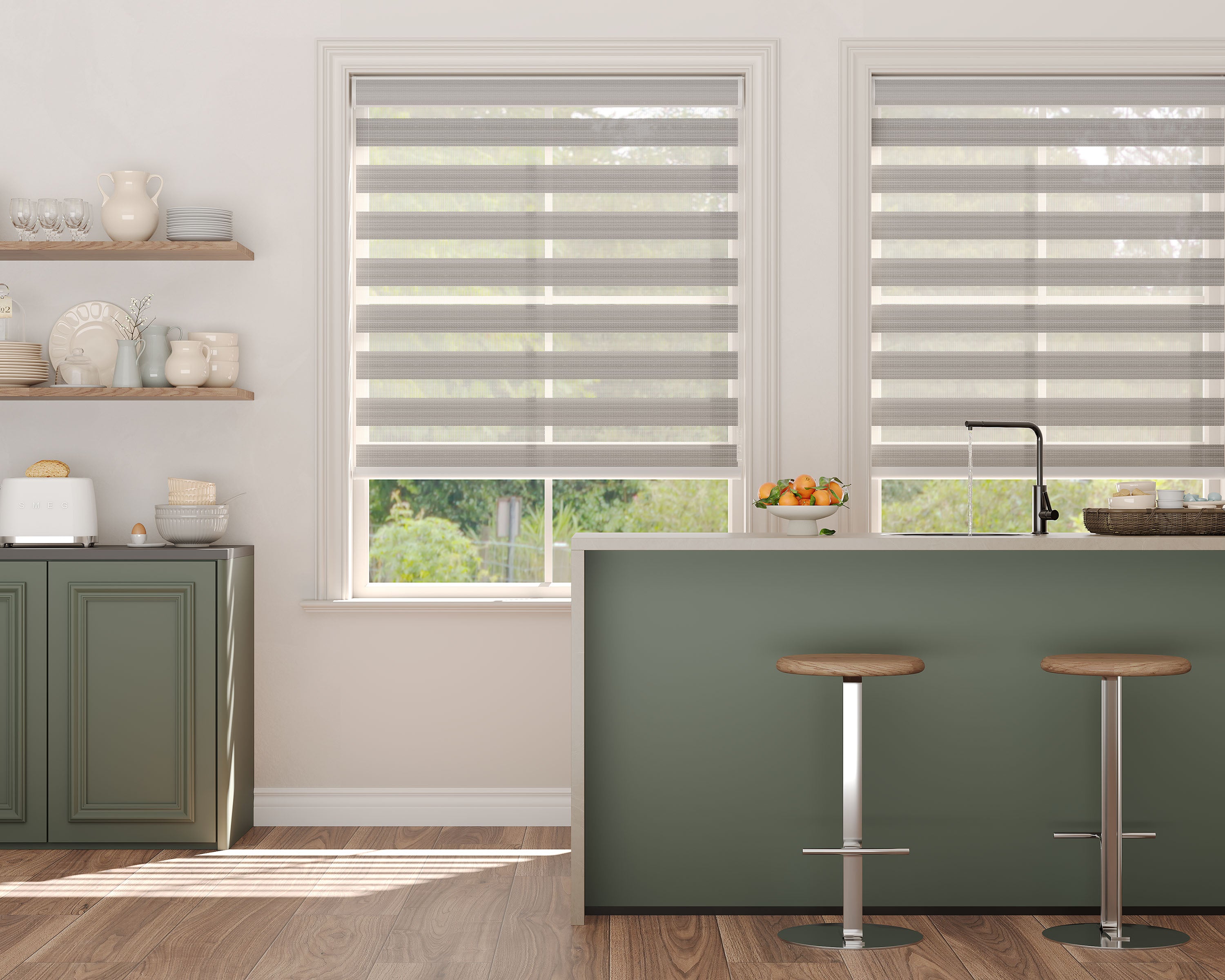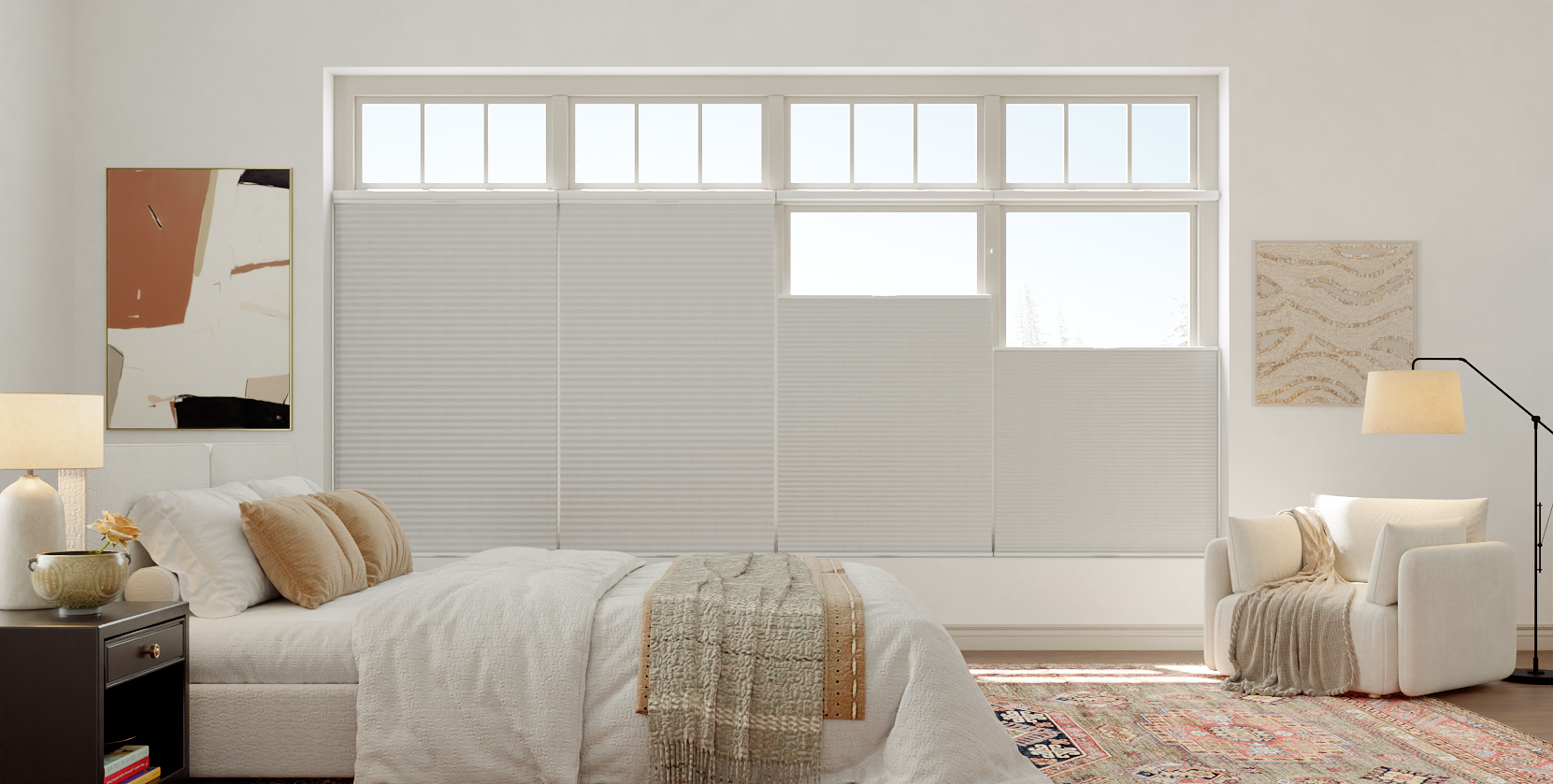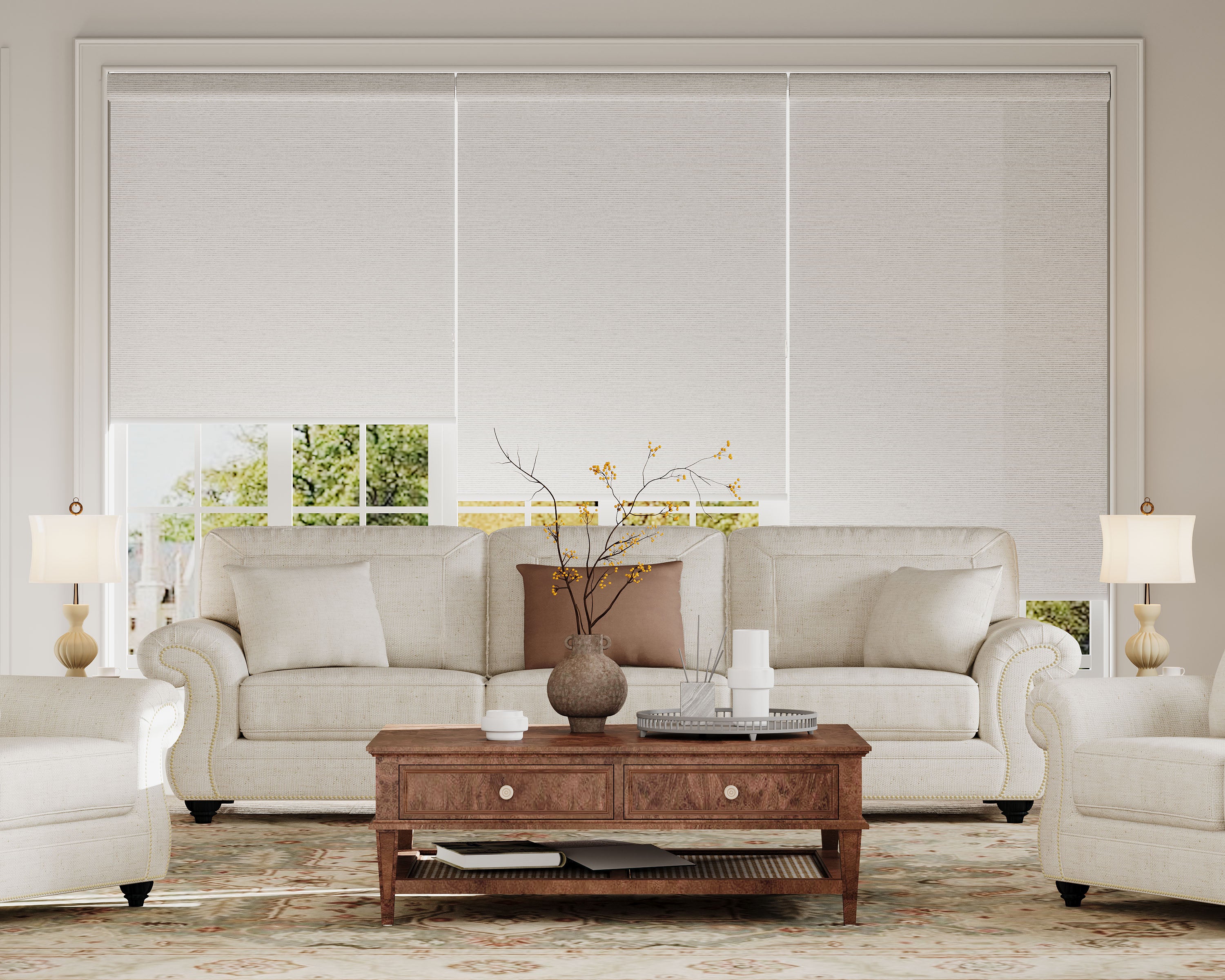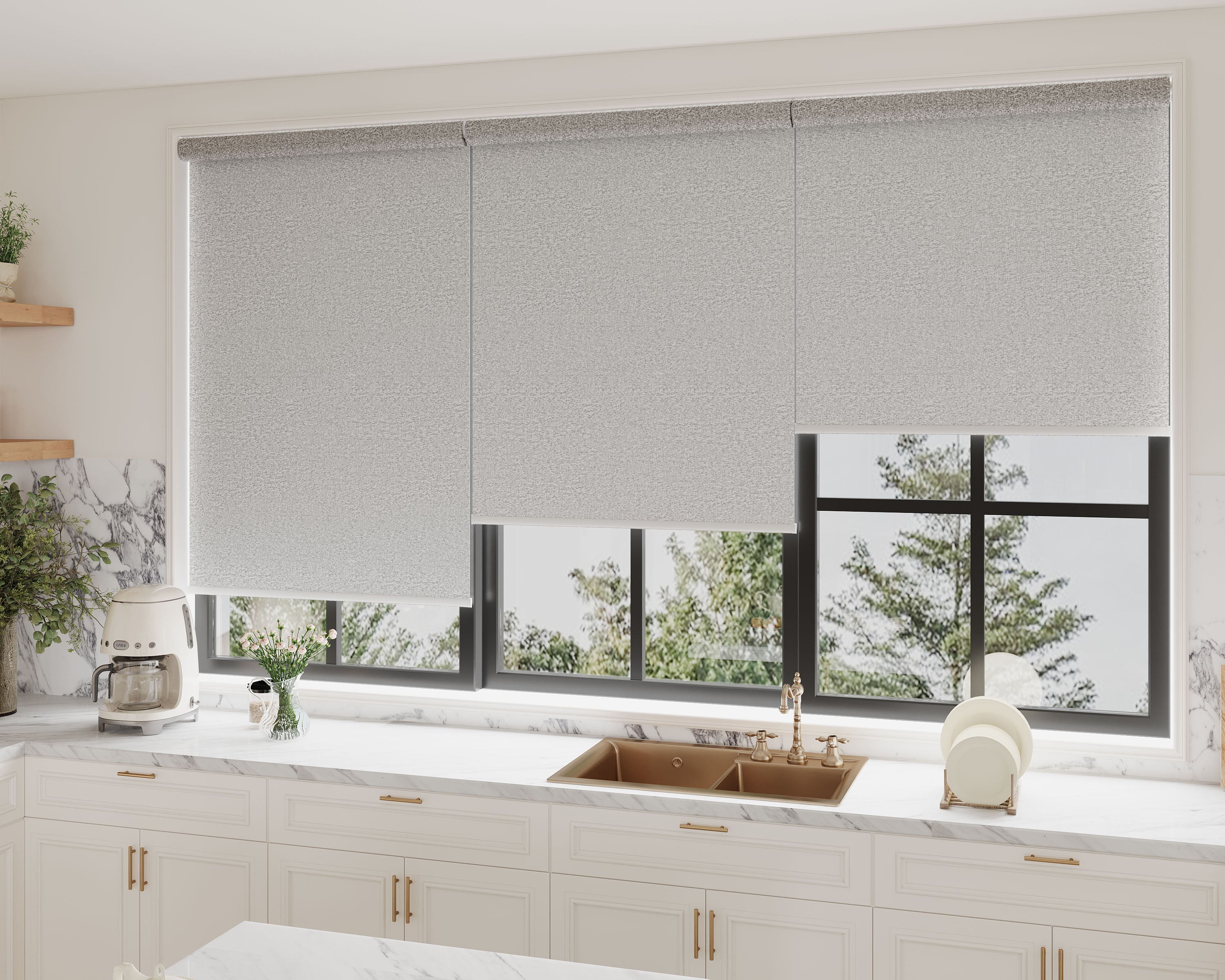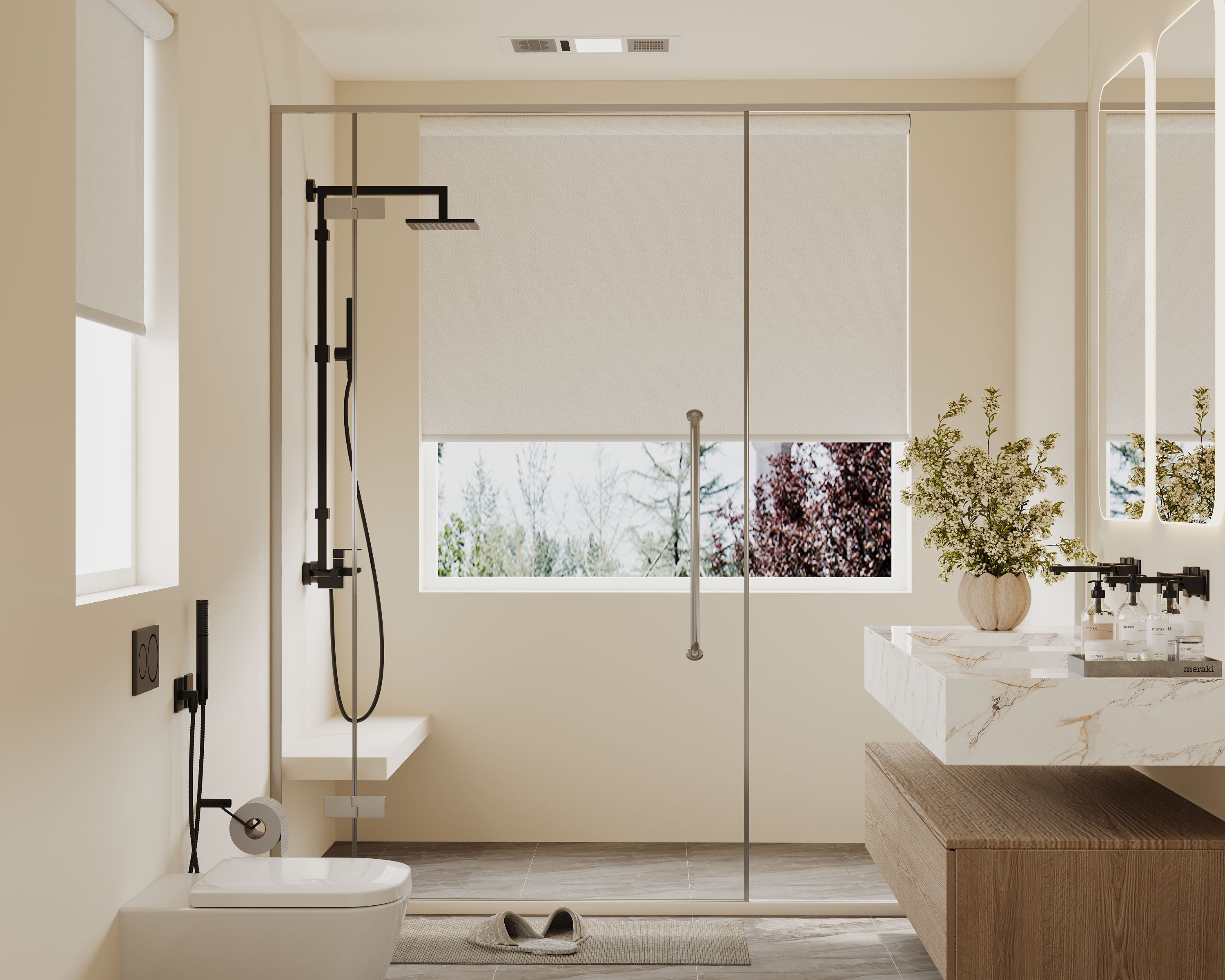Explore our top collections, including Roller Shades, Zebra Shades, and Blackout Shades.
Cellular fabrics look amazing in our homes, but cleaning them safely can leave us scratching our heads. The safest way to clean most cellular fabrics is gentle vacuuming, but sometimes spot-washing or ultrasonic cleaning might be better for tougher stains or delicate materials. Picking the right method keeps shades looking sharp and helps avoid shrinking, warping, or weird discoloration.
So, what should we reach for—our trusty vacuum, a careful spot-clean, or a high-tech ultrasonic bath? Let’s see what each method actually means for our fabric, our time, and, honestly, our patience. Mess this up, and you could ruin a pricey decor upgrade, so it’s worth knowing what’s what.
Key Takeaways
- Gentle vacuuming is usually the safest bet for most cellular fabrics.
- Spot-washing and ultrasonic cleaning might be needed for stains or delicate situations.
- Comparing options helps dodge damage and keep decor looking good.
Understanding Cellular Fabrics
Cellular fabrics have a pretty unique construction. They’re everywhere in home decor, but cleaning them isn’t always straightforward, especially when stains or structure come into play.
What Makes Cellular Fabrics Unique
Cellular fabrics—also called honeycomb or cell shades—have these hollow pockets that trap air. That means insulation: cooler in summer, warmer in winter. Plus, they just look good. We like that they add both style and energy savings.
But here’s the catch: their layered structure makes them more delicate than regular textiles. Dirt doesn’t just sit on the surface; it burrows into those little cells. So, we have to be careful to clean both the outside and inside, without crushing or warping anything.
Most are made from polyester or synthetic fibers. They’re tough in some ways, but sensitive to moisture and chemicals. Pick the wrong cleaning method and you could mess up the shape or kill the insulating effect.
Common Types Used in Home Decor
You’ll mostly see cellular fabrics as shades or blinds. Single, double, even triple cell designs are out there, each offering a different level of insulation and light control. There are light-filtering and blackout versions, so you can pick between privacy and brightness.
Colors and textures vary a lot. Some have coatings for extra stain resistance, while others are just matte and a bit more absorbent. Bigger cells give a softer, dramatic look; smaller ones keep it neat and compact.
Here’s a quick comparison:
| Type | Cell Layers | Function | Best Use |
|---|---|---|---|
| Single Cell | 1 | Basic insulation | Kitchens, offices |
| Double Cell | 2 | More insulation | Living rooms, bedrooms |
| Triple Cell | 3 | Maximum insulation | Extreme climates |
Typical Stains and Problems
Dust and pet hair love to settle in the pleats and deep inside the cells. Got pets or open windows? Expect debris to show up fast.
Food and drink spills can be a pain since liquids sometimes seep into the inner layers. That can lead to stains that are tough to reach. The fabric’s texture and cell structure mean that scrubbing too hard is a recipe for creases you can’t fix.
Yellowing from sunlight and mildew from dampness are also common headaches. If you spot these early, you can usually save the look of your shades.
Cleaning Challenges for Cellular Materials
Cellular fabrics look great and help with insulation, but cleaning them is a whole different story. They react badly to cleaning methods that are fine for tougher fabrics.
Sensitivity to Moisture and Chemicals
Cellular shades use delicate, layered materials to trap air. Too much water can make those layers lose shape or separate. So, water-based cleaning is risky. If you soak or scrub, you might end up with collapsed or warped pleats.
Harsh chemicals? Nope. They can break down adhesives or finishes in the fabric. Even some “gentle” cleaners have additives that leave stains or residue. Here’s a quick table:
| Cleaning Agent | Potential Issue |
|---|---|
| Plain Water | Warping, delamination |
| Mild Detergent | Residue, fading |
| Solvent Cleaners | Staining, breakdown |
When you’re unsure, spot-test somewhere hidden first.
Risks of Color Fading and Shrinking
Dyes in cellular shades are supposed to resist sunlight, but they still fade if cleaned the wrong way. Scrubbing or too much liquid makes it worse, especially on dark or patterned fabrics. Even “color-safe” cleaners can dull things over time.
Moisture can shrink the fabric, making shades fit weirdly or look uneven. Shrinking leads to puckering and misshapen pleats—no one wants that after a cleaning session.
Vacuuming gently with a soft brush attachment is a safer way to keep things looking good.
Vacuum Cleaning Techniques
Vacuuming is probably the easiest way to keep cellular fabrics dust-free. With the right tools and a light touch, you can pull debris out of the honeycomb structure without wrecking anything.
Selecting the Right Vacuum Attachment
Attachments matter more than you’d think. A soft-bristle brush is ideal—it lifts dust without tugging on those fragile pleats. Most vacuums include one, but if not, a clean, soft cloth over a nozzle works in a pinch.
Skip anything with a spinning roller or stiff bristles. Those can crumple or fray the fabric. Also, check if your vacuum’s suction is adjustable. Lower power is better here—full blast could pull the fabric out of shape.
Step-by-Step Dust Removal
First, close the shade fully so the pockets stay open. Start at the top and gently run the brush along each fold. Move slowly—quick passes tend to just push dust around.
Light, overlapping strokes beat scrubbing every time. Pay extra attention to the top folds and edges since dust piles up fastest there.
For tough spots, a quick blast of compressed air can knock debris out of tight corners, especially near cords or headrails.
How Often to Vacuum Cellular Fabrics
It depends on your home. Once a month is usually enough for most rooms. If you’ve got pets, open windows, or allergies, every two weeks is better. In rooms you barely use, every couple of months might do the trick.
If you see visible dust or the fabric looks dull, just vacuum more often. A regular habit goes a long way.
Spot-Washing Cellular Fabrics
Spot-washing is our fix for small stains and spills. The right solutions and a gentle touch stop stains from setting and keep the fabric from warping. No one wants to make things worse.
Choosing Safe Cleaning Solutions
Always check the care label first. Most cellular fabrics don’t handle harsh chemicals or strong solvents well. Stick with mild stuff:
- Diluted dish soap: Just a drop or two in a cup of lukewarm water
- White vinegar: Try a 1:4 mix with water for stubborn spots
- Ready-made fabric cleaners: Only if they’re marked safe for delicate or synthetic fabrics
Never use bleach or ammonia—those will wreck color and fibers. If you’re unsure, test on a hidden spot. And always use a clean, white microfiber cloth; colored cloths might bleed.
Blotting vs. Scrubbing
Blot, don’t scrub. Press the damp cloth on the stain and lift up. That pulls the stain out instead of pushing it deeper or spreading it.
Scrubbing will crush the cells or rough up the fabric. For tough messes, let the solution soak for a minute, then blot again. If it’s still there, repeat—don’t get aggressive.
Let the fabric air dry all the way before you move the blinds again. That helps avoid new watermarks or mildew.
Ultrasonic Cleaning for Delicate Fabrics
Ultrasonic cleaning is a modern, gentle way to tackle grime on delicate cellular fabrics. It uses sound waves and water to go deeper than vacuuming or spot cleaning ever could.
How Ultrasonic Cleaning Works
Ultrasonic cleaning uses high-frequency sound waves in water or a cleaning solution. When you put the fabric in the tank, those waves create tiny bubbles—cavitation—that collapse and knock dirt loose from even the tightest crevices.
There’s no hard scrubbing, so fabrics like cellular shades stay safe from rough handling. The water and waves reach where hands or brushes can’t, cleaning deep into pleats and folds. Most systems use cold or gently warm water, so heat-sensitive materials are fine.
These machines are usually at commercial facilities, not in people’s homes. That means packing up your shades and sending them out, but you do get pro-level results.
Benefits for Stubborn Dirt and Allergens
Ultrasonic cleaning is especially good at getting rid of dust mites, pollen, and pet hair deep inside fabrics. The cavitation breaks up not just visible stains but also tiny allergen particles that vacuuming can’t touch.
If you have allergies or just want a deeper clean, this method helps reduce triggers at home. Since there’s no need for harsh chemicals or rough handling, you don’t risk fading or weakening the fabric.
Here’s a quick comparison of key benefits:
| Benefit | Vacuuming | Spot-Wash | Ultrasonic Cleaning |
|---|---|---|---|
| Removes embedded allergens | No | No | Yes |
| Gentle on fabric | Yes | Depends | Yes |
| Reaches tight folds | No | No | Yes |
If you want to keep fabric quality up and your home extra healthy, ultrasonic cleaning is worth considering.
Comparing Methods: Pros and Cons
When it comes to cleaning cellular fabrics, not all methods are created equal. The right choice can make a big difference in how well our fabrics hold up, look, and feel.
Effectiveness on Dust and Debris
Vacuuming with a brush attachment is our go-to for day-to-day dust and lint. It’s gentle and helps keep buildup at bay, but stubborn debris in those honeycomb pockets? That stuff can linger. Spot-washing helps with isolated stains—if we’re quick—but it doesn’t do much for general dust.
Ultrasonic cleaning dives deeper, reaching into all those nooks where dust loves to hide. Usually, though, only pros offer this service. If the fabric hasn’t seen a real cleaning in ages, ultrasonic gets in where vacuums just can’t.
Quick comparison:
| Method | Routine Cleaning | Deep Stains | Hard-to-Reach Spots |
|---|---|---|---|
| Vacuum (brush) | Yes | No | Somewhat |
| Spot-Wash | No | Yes | No |
| Ultrasonic | Yes | Yes | Yes |
Time, Cost, and Accessibility
Vacuuming only takes a few minutes and uses stuff we probably already own. It’s hands-down the most affordable and convenient option. Spot-washing is cheap and pretty easy too—just grab a mild detergent and a soft cloth. Don’t leave the area wet for long, or water marks might show up.
Ultrasonic cleaning, on the other hand, means paying for a specialized service and going without blinds for a day or two. The actual cleaning is quick, but scheduling, drop-off, and pickup can drag it out. We really only need this for a yearly deep clean or when we’re dealing with major grime.
Let’s break it down:
- Vacuum Clean: Cheap, fast, straightforward.
- Spot-Wash: Low cost, takes a few extra minutes, good for small accidents.
- Ultrasonic: Most expensive and needs a pro, but handles the tough stuff.
Best Practices for Longevity
If we want our cellular fabrics to last, gentle cleaning is the name of the game. Regular vacuuming keeps dust from piling up and helps prevent fiber wear. Soft tools matter—a heavy hand can do more harm than good.
Spot-washing works best when we’re fast and careful. Dab, don’t rub, and always test cleaners on a hidden spot first.
A pro ultrasonic clean every so often gets rid of deep grime that regular cleaning can’t touch. Still, too much of a good thing can wear out the fabric, so once a year or as needed is plenty.
Here’s a quick list for long-lasting results:
- Vacuum weekly with a gentle brush.
- Blot spills right away and use mild spot-wash.
- Schedule ultrasonic cleaning once a year or after big messes.
When to Call the Professionals
Sometimes, no matter how hard we try, our cleaning just isn’t enough—and that’s totally fine. Professional cleaners bring gear and know-how that can revive cellular fabrics without risking permanent damage.
Signs DIY Isn’t Enough
If we’re stuck with stains that won’t budge or weird odors that linger after cleaning, it’s probably time to call in the pros. Noticing discoloration, water marks, or fabric damage after our own attempts? Better to let experts handle it.
Blinds with tricky lifting mechanisms or that cover big, hard-to-reach windows—yeah, pros make life easier there, too. If there’s visible mold, heavy dirt, or delicate specialty fabrics, it’s safest to let someone experienced take over.
Preventative Care for Cellular Fabrics
Keeping our cellular fabrics looking sharp isn’t rocket science, but it does take some smart habits and quick action. With a cleaning routine and by tackling messes right away, we can keep shades and blinds looking great for years.
Routine Maintenance Tips
A little regular upkeep goes a long way. Here’s what actually helps:
- Vacuum weekly. Use a brush attachment on low. This keeps dust from getting comfy and dulling the fabric.
- Shake out debris. A gentle shake outside knocks loose particles free.
- Inspect cords and mechanisms. Once a month or so, check for lint or blockages that might snag the fabric.
- Check for hidden spots. Dust hides in those cellular pockets—angle the vacuum to reach deep crevices.
Try not to handle the fabric too much. Oils from our hands attract dirt, so using the pull cord or handle is smarter. Here’s a quick table for easy reference:
| Task | Frequency |
|---|---|
| Vacuum Fabric | Weekly |
| Shake Out Debris | Monthly |
| Check Mechanisms | Monthly |
Reducing Future Stains
Stain prevention is half habits, half having the right stuff nearby. Keeping food and drinks away from window coverings helps—crumbs find their way into those honeycomb pockets way too easily.
If something spills, blot right away with a clean, dry cloth. Rubbing just grinds stains in deeper. If you’ve got pets or kids, hanging the fabric a little higher or choosing cordless designs can limit accidents.
Skip strong cleaners or sprays near cellular fabrics. Even air fresheners sometimes leave a weird residue. Usually, a mild soap solution and a clean white cloth are all we need for the occasional spot.
And hey, a gentle reminder to everyone in the house (ourselves included): treat those shades kindly if you want them looking fresh and modern.
Frequently Asked Questions
When it comes to cleaning cellular shades, we’ve noticed there are a few tricky gray areas that can trip us up. Picking the right cleaning method and products really makes a difference in keeping these blinds looking good and lasting longer.
What's the scoop on steam cleaning cellular shades; is it a hot mess or cool move?
Steam cleaning sounds tempting, but most cellular fabrics don’t handle heat and moisture well. We could end up warping the fabric or damaging the adhesives inside.
If you’re tempted, check the manufacturer’s guidelines first. Most recommend sticking with vacuuming and gentle spot-cleaning over steam.
Can you give honeycomb blinds a bath without waterlogging your warranty?
Dunking shades might seem fast, but soaking can dissolve glue and wreck the pleats. Even a heavy rinse can void the warranty.
A light spot-wash or vacuuming is safer. If you need a deeper clean, some brands offer professional ultrasonic cleaning with minimal moisture.
Got a DIY spirit? How about using vinegar to make those cellular shades sparkle?
Vinegar’s great on grime, but it’s risky for cellular shades. The acid can mess with fabric coatings and fade the material.
We’ve found mild soap and water works better for most spot-cleaning jobs. Always test any solution on a hidden spot first—just in case.
Spotted some dirt? What are the no-nos when spot-cleaning cellular shades?
Scrubbing hard or using harsh chemicals like bleach can scratch or bleach the fabric, maybe even unravel it. Too much water leaves marks or breaks down adhesives.
Go gentle with a barely damp, clean cloth and mild soap. Pat, don’t rub, and keep moisture out of the cells.
Bugging out about insects in your shades? What's the trick to evict those tiny tenants?
Those honeycomb cells are basically bug hotels. A can of compressed air or a vacuum with a narrow nozzle can help evict them without hurting the fabric.
If bugs keep showing up, removing the end caps lets us shake them out. Just go easy—don’t bend the fabric.
Mildew muscling in on your honeycomb blinds – how can you send it packing without damage?
Damp rooms make it way too easy for mildew to sneak onto your blinds, but blasting them with strong cleaners? That’s just asking for trouble. Honestly, I’d stick with a bit of gentle dish soap mixed with water—skip the bleach or ammonia.
Once you’ve wiped them down, leave the blinds wide open so they can dry out all the way. If you can, get some air moving in the room; it really helps keep that mildew from showing up again.


